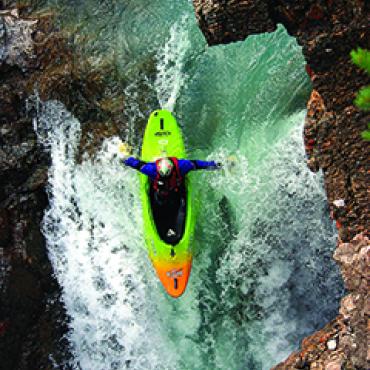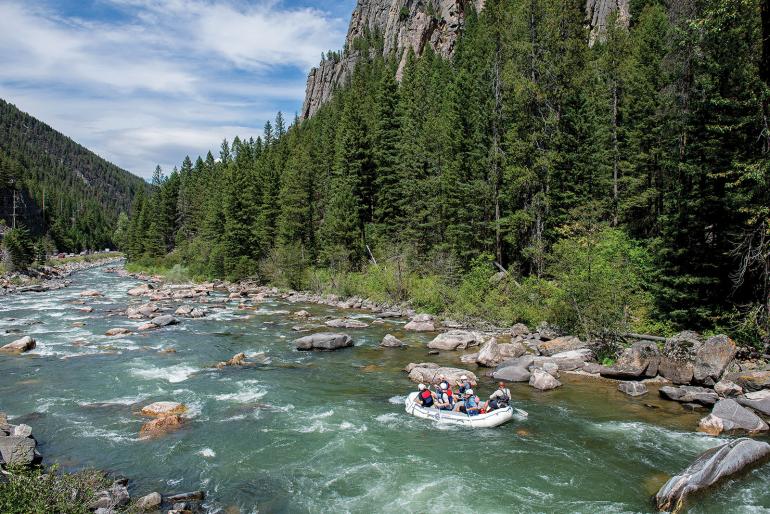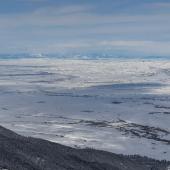Troubled Waters
The dilemma of access and excess.
As I slowly wind down the labyrinth of new roads from another exclusive clubhouse-to-be nestled high in the last best waste, my eyes are drawn to the mocha-tinted meltwater snaking down through the drainage ditch to my right. Small rivulets of clear water enter from the rebounding forest between the little brown streams pouring from job sites mired in the shin-deep mud that is a hallmark of spring in the construction industry. I gaze at the heavy machinery, trash piles, and empty containers of unpronounceable whatnot, each adding drips and drops to what was once a pristine Montana watershed known only to the teeming wildlife of a bygone era.
Rolling down the mountain, my mind drifts from thoughts of the economic boon this ritzy clientele has provided for myself and my family to the horrifying possibility, perhaps even probability, that we are well on our way to loving the Greater Yellowstone Area to death. I decided to take a lunch break at Ouzel Falls to clear my mind. The little singletrack winding through the meadow and forest to the falls is now gone. Instead I stroll down a path that could pass for a highway in Central America. With all the oily logs, chain link fencing, crushed rock, and intrusive signage surrounding me, I can’t help but wonder whether it is possible for mankind to ever become involved with true wilderness areas without destroying the very essence that we have sworn to protect.
The meager, early spring flows cascading off the falls seem so full of sediment for this time of year. Am I being paranoid? Am I anti-development? Or have I been fooling myself for all of these years, believing that the folks developing and selling this enormous mountainous area are concerned, first and foremost, with maintaining the quality and integrity of the ecosystem that made their endeavors a lucrative proposition in the first place?
I began to wonder about the petition I signed last year in the hopes of helping to protect the Gallatin and its tributaries from the heavy burden of the impending overdevelopment. The last I had heard, the petition for Outstanding Resource Water (ORW) designation for the Gallatin had been accepted by the state legislature, and the Department of Environmental Quality (DEQ) had the ball rolling on the Environmental Impact Study that would provide the information necessary to determine if the Gallatin was indeed worthy of permanent protection. ORW status will demand the “greatest protection feasible” for the Gallatin River and is given only to rivers and lakes of superior “environmental, ecological, or economic value.” Though protecting and maintaining the quality of the Gallatin’s waters sounds like a no-brainer, The Montana Association of Realtors quickly suggested that this ORW business was quite possibly a ploy by the Left-Wing Green Machine to deprive area land brokers and developers of new supersize SUVs, second homes, and early retirements. To counteract this perceived gross injustice, Representative Debby Barret (R-Dillon) introduced HB-467.
Barret’s bill would shift the burden to local residents, requiring those of us interested in long-term enjoyment of the pristine waters of the Gallatin to pony up the cost of the environmental impact statement (EIS) immediately—presumably while still trying to make payments on the $300,000 dilapidated tool shed that a realtor sold us on the recently blighted north side of Bozeman. Fortunately, on February 27, Montana’s House of Representatives voted to exempt the Gallatin from the harsh new stipulations it imposed on the ORW process in HB-467, and the lumbering bureaucratic process rambled on.
A quick phone call to American Wildlands, the environmental organization responsible for initiating the ORW process for the Gallatin, confirmed that the DEQ has indeed begun work on the EIS, a draft of which will be made available to the public in June. The draft will include a public review and comment period, offering an excellent opportunity for the general public to weigh in on the issue. The more I learned about this process and the ORW designation that will protect the Gallatin River, the more I became aware of the dire need for all of us who care about these last swaths of wilderness to come together and be heard.
It is shameful that highly educated people, blessed with excess, accept and sometimes encourage cut-corner methods and the exploitation of loopholes in the system when building in this exceptional mountain environment. It is even more shameful when “new locals” and longtime residents cash in at the expense of the land and waters that make the Greater Yellowstone Area such a powerful and unique place to call home. Yet our elected officials rarely hear those who do not speak the loudest or who cannot afford to be heard. So keep yourself up to date on the ORW process, learn what this designation will mean for our beloved river, and when the time comes, take action to ensure that the mighty Gallatin remains a clean, pure mountain stream.












